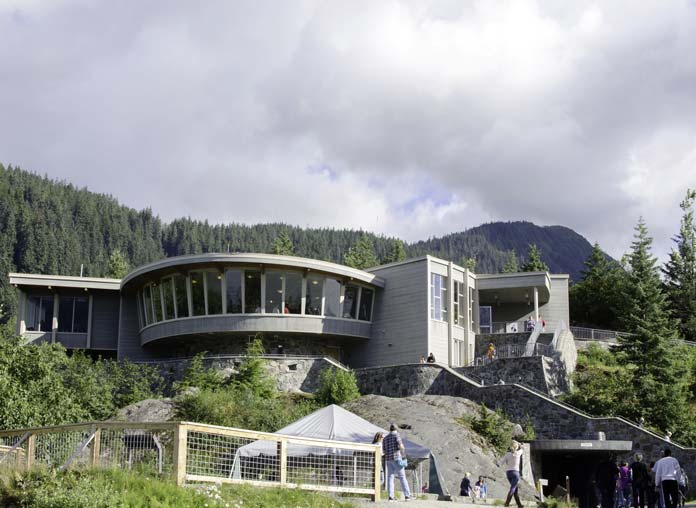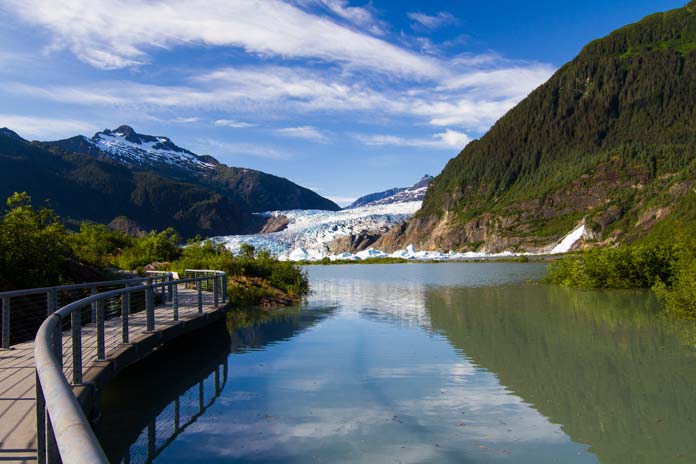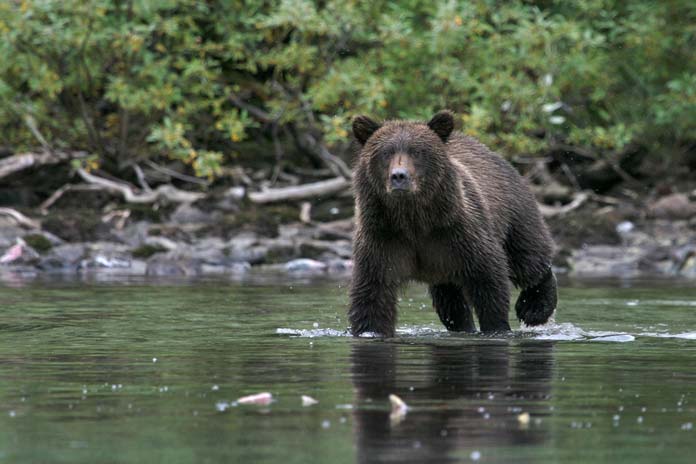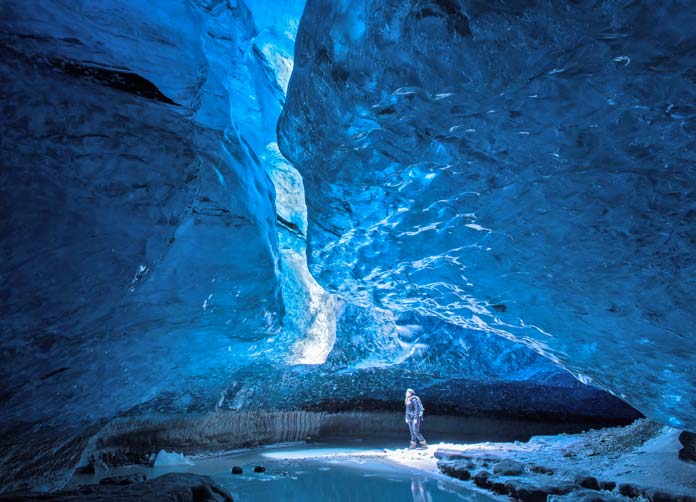The Mendenhall Ice Caves can be found in Mendenhall Valley. Juneau, Alaska, is the closest and nearest town, which is about 12 miles away. The glacier itself is almost 13 miles long and is tucked in amongst the mountains. The glacier and surrounding area that includes over 5,000 acres is part of and protected by the Mendenhall Glacier Recreation Area. The temperatures have caused the glacier to shrink slowly over the years, and it appears as if this is the current and stable trend, and it will continue to diminish.
Table of Contents
What does the name Mendenhall Reference?
Thomas Mendenhall was the Superintendent of the U.S. Coast and Geodetic Survey from 1889 to 1894. He was appointed by President Harrison and was a noted scientist who surveyed the boundary between Canada and the state of Alaska. In 1892, the glacier was renamed to hone Mendenhall and all his accomplished research efforts.
The Visitors Center
The Mendenhall Glacier Visitors Center has some great interpretive programs through the year for people to enjoy. Fantastic views of the lake and glacier can be seen from the Center, and over 500,000 people visit, most of them coming from cruise ships as they disembark for a period of the summer months. Trials are available from the Visitors Center, and easy trails like the Steep Creek Trail and the Photo Point Trail can be accessed and hiked from here. Elevated boardwalks above Steep Creek may give you a glimpse of the salmon jumping from the water, and even a few bears. The Nugget Falls Trail is relatively new and leads you to the falls which are very close to the glacier. The West Glacier Trail is the trail to see the mysterious ice caves.
 Why is the Glacier Blue?
Why is the Glacier Blue?
Most glaciers appear either blue or white. The ice absorbs all the colors of the light spectrum except for the color blue, which in turn, transmits it instead. Tucked among the white mountain of snow, or the area littered with the greenery of the trees, the blue color of the massive glaciers is impressive. They give the landscape an unexpected and surprising element that is not usually seen. Glaciers are massive, beautiful, and ancient, providing a look into what once may have been a land covered in them.
How Do I get to the Ice Caves?
There are two ways to get to the ice caves, one is across the lake, and the other is a hike. Crossing the frigid waters right past the glacier is extremely hazardous, and should only be attempted by experienced cold-water paddlers, and those that can perform a self-rescue should your boat or vessel capsize or run into danger. The land access to the ice caves is the more standard route. People use the West Glacier trail which veers off into an unofficial trail that heads through the forest and over some difficult and rocky terrain. It is approximately four miles one way, and the markers are few and inconsistent, so be aware of the hazards of getting cold and lost. The main cave that you see in most photographs is located on the west flank of the glacier.
 Things to Consider for Your Journey
Things to Consider for Your Journey
Glacier access and travel are unlike any other. Are you prepared? The amazing ice caves are one-of-a-kind, a surreal and unique experience for those that can find them. You will need anywhere from 6 to 8 hours to make the journey. It is cold, so wear layers, and bring extra and dry clothing to avoid hypothermia. The footing is wet, slippery, rocky, unstable, and could collapse. Wear a good pair of hiking boots and watch where you are walking. Be informed that although beautiful, ice caves can collapse without warning, as a few have done and fatalities have occurred. The entrances to ice caves are brittle and weaker than the rest, so please use caution and tread carefully. Also, have a communication plan set up. You will be where there are no marked trails, so let someone know when you should return, and in which direction or route you are taking. Bring a GPS to mark coordinates in case you get lost, or to help you return, as this is when many people get lost is on the return journey.
Wildlife of the Glacier
On your trip, you may be surprised to learn about or see a significant amount of wildlife that calls the area home. Steep Creek is known for the beavers that work relentlessly to create their ponds and homes from the creek, and Artic terns nest all around Mendenhall Lake. Mountain goats love the rocky terrain and call the mountains their own, while coyote, squirrels, snowshoe hares, and short-tailed weasel build their homes on the valley floor. Salmon that live in the waters provide a food source for black bears. Turn your eyes to the sky and trees occasionally to look for eagles that live in the area.

The Magic of Mendenhall
The Mendenhall ice caves are among the best of nature’s unique creations. Standing on a glacier and staring at the cool blue formations that surround you in the small, hollow area, is an incredible experience. Due to global warming effects, the glacier is receding, so the ice caves although present now, are changing, and will eventually disappear. The journey to the caves is treacherous and challenging, but the beauty that lies within the glacier is worth every step.




